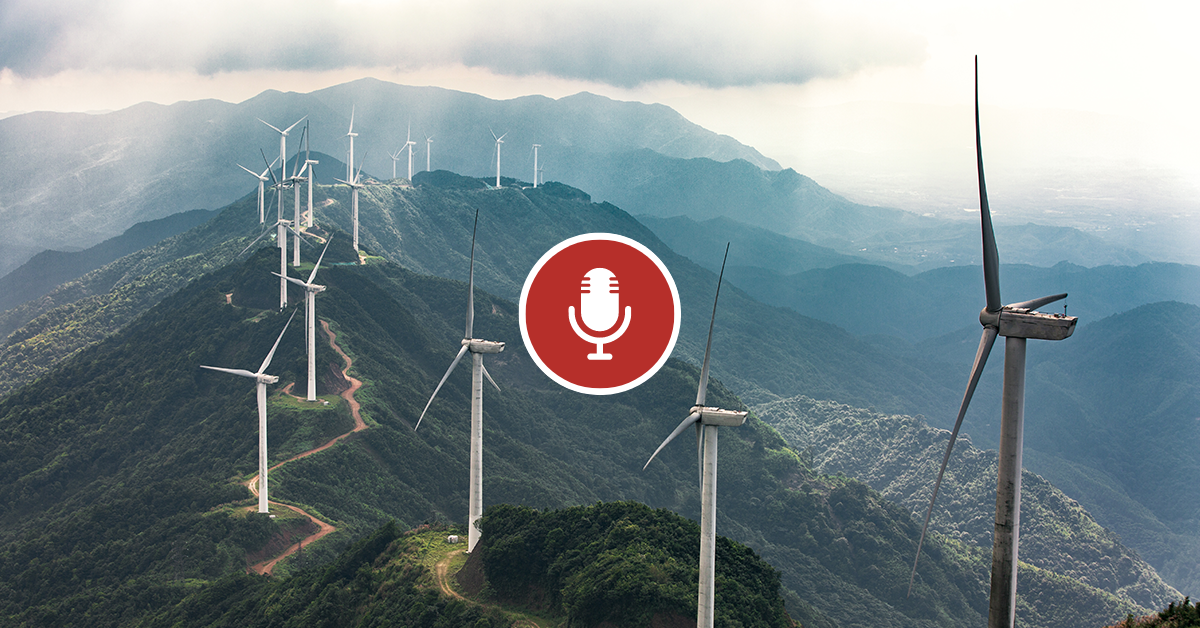Mitigating climate change is a high-level priority for the Chinese government, and China is already leading clean energy technology manufacturing globally. Why is China investing so much in green development? How can competition with China incentivize climate action in the United States?
For Earth Month, National Committee Public Intellectuals Program fellow Joanna Lewis (Georgetown University) joins us to discuss climate change in China and healthy U.S.-China competition in green technology.
View more U.S.-China Insights videos

Joanna Lewis
Joanna Lewis is the Provost’s Distinguished Associate Professor of Energy and Environment and director of the Science, Technology and International Affairs Program at Georgetown University. She is also a faculty affiliate in the China Energy Group at the U.S. Department of Energy’s Lawrence Berkeley National Laboratory. Dr. Lewis is the author of Green Innovation in China, and was a lead author of the Intergovernmental Panel on Climate Change’s Fifth Assessment Report published in 2014. She has worked for several governmental and non-governmental organizations, and was a visiting scholar at Tsinghua University, the Woodrow Wilson International Center for Scholars, and the East-West Center. Professor Lewis holds master’s and doctoral degrees in energy and resources from the University of California, Berkeley, and a bachelor’s degree in environmental science and policy from Duke University. She is a fellow of the National Committee’s Public Intellectuals Program.
Transcript
Joanna Lewis: Hi, I’m Joanna Lewis. I’m Provost’s Distinguished Associate Professor of Energy and the Environment and Director of the Science, Technology and International Affairs Program at Georgetown University.
How can competition with China help the U.S. clean energy technology sector?
I think that U.S. competition with China has in many ways been a mobilizing force for United States policy on climate change and particularly in clean energy technology development. Of course, the most important climate legislation that we’ve seen in recent history is the IRA, the Inflation Reduction Act, which includes all sorts of programs to incentivize the development of clean energy technologies here in the United States. And we’ve already seen a movement towards building new clean energy technology manufacturing facilities here in the United States in response to the subsidies and incentives that this legislation provides.
I think in many ways, this legislation wouldn’t have happened without recognition that the United States in many ways is sort of falling behind China in the clean energy technology manufacturing space, with repercussions also for our positioning in clean energy technology innovation more broadly. And so I think that it in some ways it’s been useful to have competition with China, really incentivize climate action and clean energy technology innovation support here in the United States.
Is China ahead of the United States in developing green technology?
Joanna Lewis: China leads the world in the manufacturing and deployment of almost every clean energy technology that you could think of wind turbines, solar panels, batteries, electric vehicles, and the list goes on. But I think that as China has developed these industries quite rapidly, there have been real investments made in the in the scaling of these technologies as well as in clean energy innovation.
And I think that it remains to be seen whether China is going to sort of not just be the scaler of existing technologies or whether it has the ability to really innovate in the next generation of clean energy technologies that we’re going to need for the low carbon transition. Historically, the technologies that China has really been able to adopt were initially innovated in other countries, primarily Europe or the United States, including the wind turbine and particularly solar photovoltaic technology.
China was able to have that technology transfer it and then really scale up manufacturing at home. And so I think the true test of China’s national innovation system in the clean energy and climate space will be if we see new innovations coming out of China, particularly in the next generation, clean energy technology industries that are going to be, you know, increasingly important in the coming years as countries all over the world scale up their deployment of low carbon technologies.
How important is climate change to China’s overall policy in the year 2023?
Joanna Lewis: Climate change remains a high-level policy goal for the Chinese leadership. We still see a mention of commitment to achieving the key climate change goals that have been laid out. But, you know, particularly under the Paris Agreement, China has a set of goals for 2030, including peaking emissions no later than that year, as well as a goal of achieving carbon neutrality by 2060.
These so-called dual goals are really the cornerstone of China’s climate policy. And while they remain very important in China’s overall national policy trajectory, we have seen somewhat of a reversal in China’s shift away from coal and in fact, a return to coal in the last year, particularly coming out of the COVID 19 pandemic, and then with the war in Ukraine. Concerns about energy security have certainly permeated China’s leadership, and we see new incentives to build coal plants and to mine coal, even if it doesn’t necessarily make economic sense to do so. I think a lot of this is just a return to kind of conventional tried and true technologies in a time of crisis.
But I think in order, of course, to be able to achieve the 2030 and especially the 2060 goal, this is going to require a much more concerted effort to shift away from fossil fuels and coal in particular. And we still see many signs that China’s leadership is committed to this low carbon transition and to carbon neutrality goals sometime after mid-century.
Happy Earth Month. Thank you, everyone.
